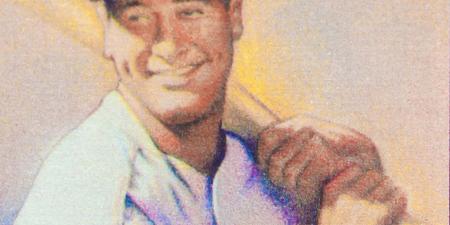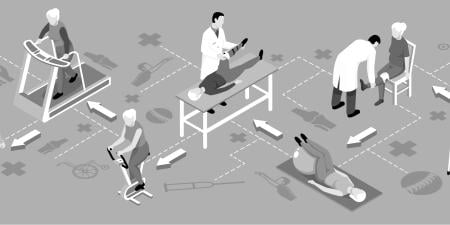A few years ago, I received an invitation from the editors of the then-projected fourth edition of Bioethics—previously published as the Encyclopedia of Bioethics—to revise my 1995 entry on rehabilitation medicine [1]. I accepted the invitation, wrote and submitted the revision, and, in due time, received a review. While most of the review was positive, it nevertheless complained that my essay
tends to individualize the problem (of disability) and to pathologize the disabled person. More contemporary work in bioethics…theorizes disability in terms of the patient’s embodied experience in the context of unjust social structures. Disability, that is, is best understood not as a property of individuals but rather of social contexts.
Although my essay was eventually accepted and published, I was perplexed by these comments. Having spent more than 30 years on the faculty of a medical school’s department of rehabilitation medicine and now holding the rank of full professor, I felt I knew something about rehabilitation, and I was certainly aware of the “disability as a social construction” trope. My objection to the reviewer’s comments was that rehabilitation medicine must, by its very nature, apply its therapeutic know-how to cognitive, behavioral, and affective symptoms of disability onset; otherwise, it wouldn’t be rehabilitation medicine.
In this essay, I would like to ponder these questions: If disability is essentially an “embodied experience in the context of unjust social structures,” do disability advocates view the rehabilitation effort and the medical model on which it rests as sociocultural mistakes? How can we explain disability advocates’ arguments? Because we need to avoid “pathologizing the disabled person,” should we forgo rehabilitation’s explicitly therapeutic or admittedly “normalizing” attempts to lessen the burdens and discomforts of stroke and musculoskeletal, spinal cord, and brain injury? When I experienced the onset of myasthenia gravis about seven years ago and was significantly (but only temporarily) disabled as a result, if someone had told me my experience was largely one of “unjust social structures,” I would have thought him or her mad. But would the disability movement say I would have been wrong to do so?
Have I concocted a reductio ad absurdum argument? I don’t think so. People with disability and their advocates frequently evince a pronounced discomfort with anything that devalues the experience or phenomenon of disability—including rehabilitation’s “normalization” approach to alleviating disability’s burdens and discomforts by restoring function through pharmacologic and therapeutic modalities. Even a cursory reading of the disability movement (or disability studies) literature reveals a marked antipathy if not downright contempt toward medical interventional models (like rehabilitation medicine) that attend to disability onset. Such models are repudiated for portraying “disabilities as deficits” that range on a continuum from moderately undesirable to not worth living with. Consider this passage from one of the entries on disability appearing in the fourth edition of Bioethics [2]:
The way that disability tends to be discussed within bioethics remains at odds with how it is understood within disability studies and by advocates for disability rights [3]. Tensions between the disability rights perspective and the dominant voices within bioethics tend to arise from or reflect a very basic dispute about the effect of having a significant impairment on one’s quality of life [4]…. The legacy of the medical model within bioethics…is in the unquestioned idea that…the quality of a life lived with a disability is inherently diminished, and that decisions to end or prevent the existence of a disabled person therefore incontrovertibly reflect sound, well-reasoned judgments [5].
Indeed, some disability advocates roundly criticize Western bioethics for embracing the medical model, especially in emphasizing personal autonomy and condoning the relief of disability’s burdens through medical rather than environmental or attitudinal interventions. Worst of all, in the eyes of this community of advocates, is Western bioethics’ embrace of personal autonomy, which has occasionally and with only modest bioethical pushback resulted in persons with severe disabilities electing to have life-prolonging treatments withheld or discontinued, resulting in their deaths.
Over the last 30 years, the stories of people like Larry McAfee and Elizabeth Bouvia—two people with profound levels of disability who requested that their life-prolonging treatments be discontinued—have rallied disability advocates, who interpreted their requests to die as capitulations to Western societies’ perception that their lives were not worth living [6]. More recently, practices like preimplantation and prenatal genetic diagnosis that result in selective abortion have drawn the disability movement’s ire with their “eliminating disability by eliminating persons with disability” approach [2, 6, 7].
My Emory colleague and noted disability studies scholar Rosemarie Garland-Thomson recently termed this sensibility that disability advocates fiercely oppose “eugenic logic” and opined that:
Eugenic logic tells us that our world would be a better place if disability could be eliminated. Enacted worldwide in policies and practices that range from segregation to extermination, the aim of eugenics is to eliminate disability and, by extension, disabled people from the world [8]… This understanding of disability as somehow detachable from human life rather than essential to it fosters the idea that disability does not have much to do with us unless we have the misfortune of having it descend upon us [9].
In her essay, Garland-Thomson offers a variety of arguments—based on her view that disability brings the intrinsic value of diversity to the human experience—to show why disability should be appreciated as a good in itself rather than just protected or maintained at arm’s length. She argues that disability enables (1) the creation of meaningful life narratives, especially by contributing to “the cultural work of teaching the nondisabled how to be more human” [10]; (2) knowledge development, especially as that knowledge is processed by an intersection of body and world filtered by the minority epistemic lens of disability; and (3) ethical insight and sensitivity, drawn from an “openness to forces outside of our will as a form of creative and flexible dialectical engagement with the world” [11].
One response to the disability rights opposition to the medical model, however, is that the former tends to conflate two rather different phenomena—(1) the pain and suffering that accompany disability onset, especially as experienced by persons whose disabilities or impairments are acquired, like my myasthenia gravis, and (2) instances in which people are born with congenital blindness or deafness, Tourette’s, motor impairments from cerebral palsy, and so forth—and to understand both of them as essential, indeed defining, elements of who they are. Thus, what may count as “impairments” in the medical model, requiring therapeutic intervention—such as cochlear implants for deafness, orthopedic surgeries for limb “deficiencies,” or pre-implantation genetic diagnosis to prevent numerous genetic syndromes resulting in disability—are often characterized by disability advocates as normal variations within the human species [7]. Disability advocates are angered over the propensity toward “normalization” inherent in the medical model because disability for them needs no adjustment or remediation. But I believe that this position is sometimes articulated in too sweeping a fashion, such that the efforts of health care professionals like rehabilitationists to remediate functional loss imposed by some—especially acquired and keenly oppressive and undesirable—disabilities like my myasthenia gravis goes roundly unappreciated.
A second response to the disability rights position is that its arguments often seem the products of “motivated reasoning.” As described by cognitive psychologists over the last two decades, the process of motivated reasoning begins with an individual’s having selected or arrived at a point of view (or conclusion) prior to argumentation [12]. The reasoner then proceeds to argue backwards—that is, selectively searching for, constructing, and attending to only those argumentative materials that support his or her position and ignoring or dismissing facts, data, or beliefs to the contrary. The more committed the reasoner is to his or her preferred position, the more unyielding will be the reasoner’s argumentative attitude. Motivated reasoning theory thus explains why debates between entrenched ideologues or “true believers” seldom result in the participants changing their minds on the basis of the logical or rational power of the other side’s reasoning. Each side has decided on what will count as acceptable and persuasive reasons prior to debate and will predictably refuse to budge from the preferred scripts and explanatory models [12].
Consequently, as persons with disability associate the medical model with an ideology that they believe condones their disappearance from the earth, they advance arguments predicated on the intrinsic value of disability and repudiate instrumentalities like selective abortion and various forms of assisted death as murderous. In my opinion—and possibly that of many able-bodied people and even people with serious ongoing disability—these arguments nevertheless sound hollow. Garland-Thomson’s arguments, for example, have an uncomfortable utilitarian ring in justifying the value of disability in terms of its bettering human society. First and foremost, we should be intent on improving the welfare of persons with disability rather than using them for improving others’ social consciousness. Alternatively, insisting that prospective parents not abort a fetus with serious disability would seem to impose an unreasonable degree of moral obligation on them by insisting that they and their offspring live lives whose quality they may find acutely and chronically unpleasant [13]. In a related vein, rejecting the request of a person with disability to discontinue or withhold life-prolonging medical treatment because disability advocates believe it transmits a worrisome or politically incorrect message treats that person as an instrument of ideology rather than as an end in him- or herself. And, while human diversity and variation can indeed be salutary, it is hard to imagine that their many manifestations across the globe must include the significant loss of welfare characteristic of many serious disabilities.
I suggest that disability advocates would be much more persuasive by noting, as Garland-Thomson pithily observes, that “disability is the body’s response over time to its environment” [9]. Disability is indeed “inherent in our being” [9], as anyone who lives long enough will almost certainly join the community of persons with disability.
Just as I believe disability advocates maintain an unreasonable fear of “eugenic logic,” I also believe that the community of (temporarily) able-bodied persons maintains a host of deep-seated but strikingly adolescent fantasies about eternal youth, independence, and rugged individualism that renders the idea of serious functional loss from disability onset unimaginable. That denial is best illustrated by an inability to achieve consensus on what our socioeconomic policies towards disability care should be or on what justice “owes” to persons with disability, with the result that Americans with disabilities today typically have less money, less education, poorer employment prospects, and less social participation than any other group in our society [14]. Yet, with one billion people in the world experiencing serious disability—about one person in every seven [14]—it seems safe to say that disability will only disappear when the kinds of technologies that transhumanists envision—technologies that represent the transhumanist belief that the human body (whether temporarily able or not) is embarrassingly weak, imperfect, and unreliable—become universally accessible [15].
In the meantime, we will need to figure out how to advance from our adolescent denial of the reality of disability to a mature and realistic acceptance of our inherent finitude and life’s predictably entropic course. Only then will we be able to develop disability policy and cultural attitudes that will be humanly gratifying and dignifying, especially when disability finds and strikes virtually every one of us.
References
-
Banja J. Rehabilitation medicine. In: Reich WT, ed. The Encyclopedia of Bioethics. 2nd ed. New York, NY: MacMillan; 1995:2201-2206.
-
Schick A, Asch A, Wasserman D. Disability: III. Theories of. In: Jennings B, ed. Bioethics. 4th ed. Farmington Hills, MI: Macmillan Reference; 2014:867-874.
-
Schick, Asch, Wasserman, 867.
-
Schick, Asch, Wasserman, 868.
-
Schick, Asch, Wasserman, 869.
-
Cohon R. Disability: I. Ethical and societal perspectives. In: Jennings B, ed. Bioethics. 4th ed. Farmington Hills, MI: Macmillan Reference; 2014:846-858.
- Garland-Thomson R. The case for conserving disability. J Bioeth Inq. 2012;9(3):339-355.
-
Garland-Thomson, 339-340.
-
Garland-Thomson, 342.
-
Garland-Thomson, 344.
-
Garland-Thomson, 348.
- Haidt J. The emotional dog and its rational tail: a social intuitionist approach to moral judgment. Psychol Rev. 2001;108(4):814-834.
-
Sparrow R. Imposing genetic diversity. Am J Bioeth. In press. https://mc.manuscriptcentral.com/societyimages/uajb/Sparrow.pdf. Accessed February 24, 2015.
-
Gostin LO, Francis LP. Disability: II. Legal issues. In: Jennings B, ed. Bioethics. 4th ed. Farmington Hills, MI: Macmillan Reference; 2014:859-866.
- Bostrom N. In defense of posthuman dignity. Bioethics. 2005;19(3):202-214.



